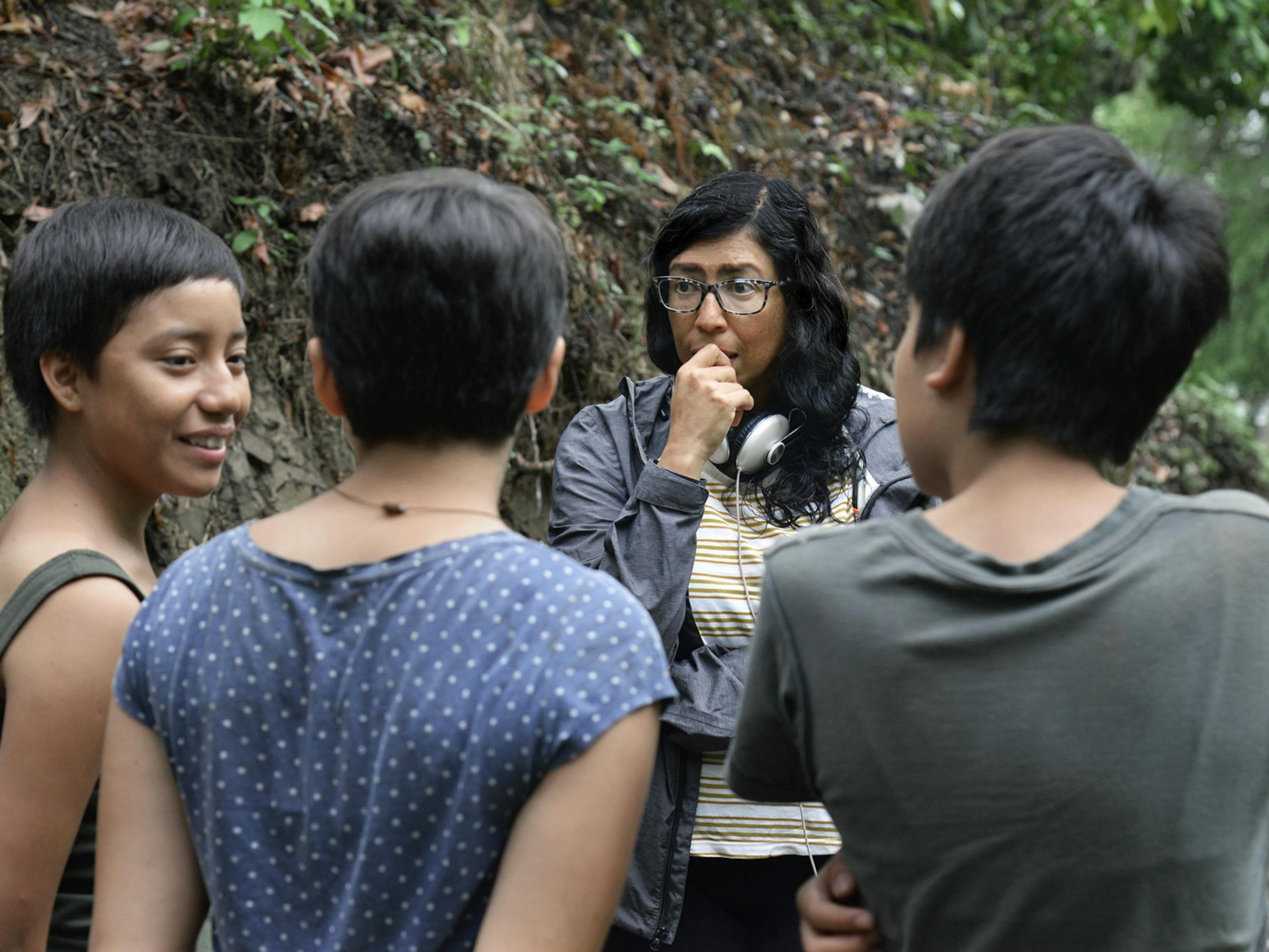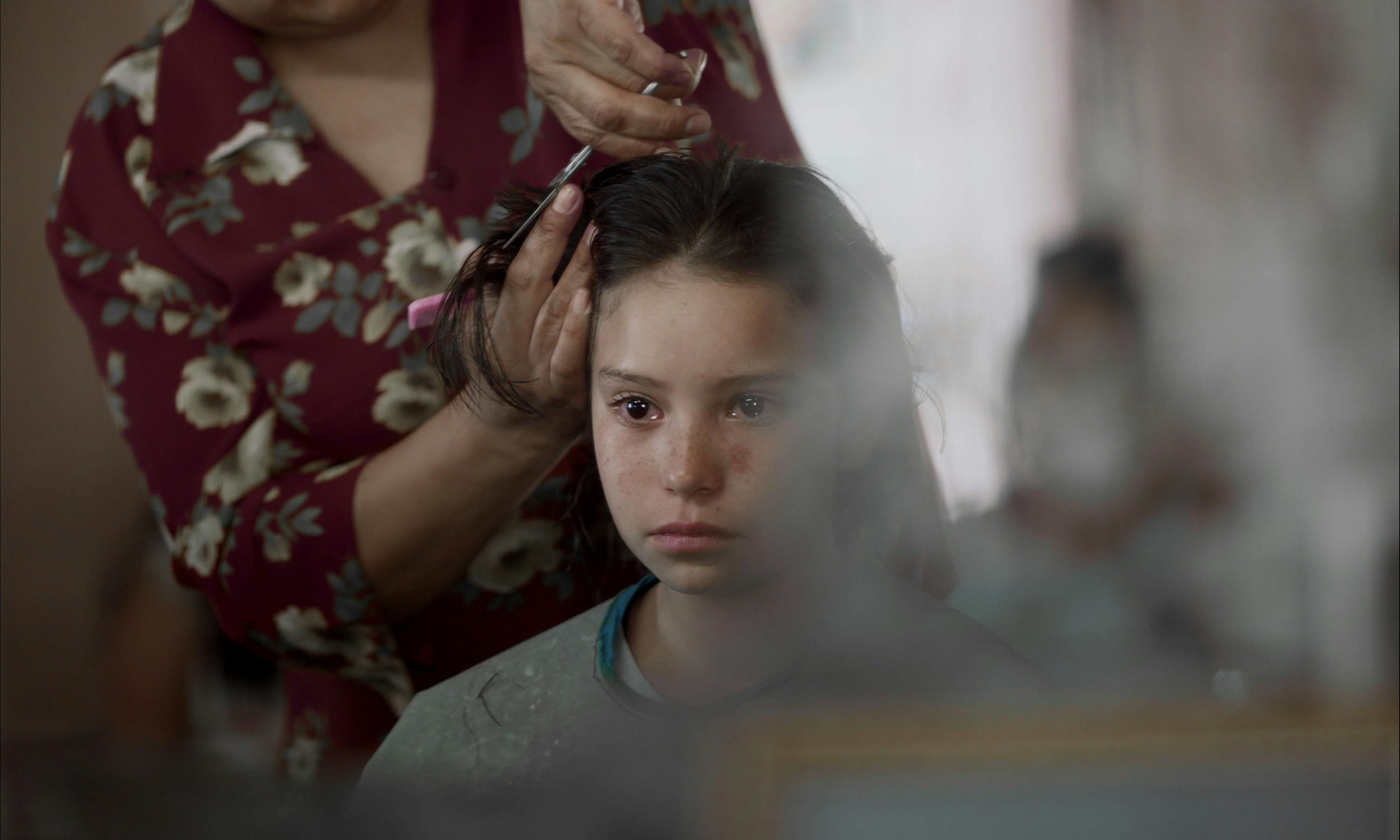With Prayers for the Stolen, director Tatiana Huezo captures the tribulations of girlhood lost.
Tatiana Huezo, director of Mexican feature film Prayers for the Stolen, did not read Jennifer Clement’s novel by accident. Producers Nicolás Celis (Roma) and Jim Stark (Mystery Train) reached out to Huezo, asking her to read Clement’s 2012 novel, a portrait of girlhood in the mountains of Mexico, in the face of violence brought into the community through drug and human trafficking organizations. The threat to girls and young women is so prevalent that their mothers cut their hair short, and the girls retreat to underground hideouts. Huezo, the celebrated documentarian whose films like El lugar más pequeño and Tempestad have garnered worldwide attention, adored the novel and found its themes to be ones she was already exploring.
“At the time, I was researching a new documentary which was based in the world of childhood and adolescence, and I was delving into what it means to grow up,” says Huezo. “I can remember devouring Clement’s book in three days. I quickly fell in love with the protagonist, Ana, and how she realizes what it means to be a woman in the context of violence.”
The recent country selection out of Mexico for the Best Foreign Language Feature category for the 2022 Academy Awards, Prayers for the Stolen may be Huezo’s first foray into fictional storytelling, but one hopes not her last. Here, Huezo speaks to the transition between forms and how she brought her documentarian lens to her first fiction feature.

Tatiana Huezo and the cast of Prayers for the Stolen
Queue: Have you been planning for the transition from documentary to fiction for a long time?
Tatiana Huezo: I think that with my last two films, which were both documentaries, there was an ongoing search for storytelling mechanisms that are very close to those used in fiction. The staging usually includes several points in the characters’ lives, situations I come across during my research which touch me on some level. I also tend to emotionally “provoke” the characters. I think that the aim of an interview is, among other things, to provoke and ensnare human feelings. Dramatic structure was always something I worked diligently on before I began filming my previous movies, as well as constructing the imagery and the narrative. I have always seen documentary film as the chance to take a powerful emotional and sensorial journey. When I got the opportunity to write and direct Prayers for the Stolen, I didn’t have to think twice. It was the chance to take the search and experimentation I had already begun in my first films to the next level.
What perspective did you bring to the story?
TH: I have a nine-year-old daughter who I see grow each day. Her world and magic make me look back at my own childhood and what my world was like at that point in my life. It was essential for me to be able to speak from my own perspective on the context of violence the story is shrouded in, my own view of Mexico. Nicolás and Jim agreed that I should make the novel my own and that I should take it where it needed to be taken. Nico and I have been working together for the last 10 years; we know and respect one another deeply. The book was an amazing starting point, and an incredible inspiration to be able to reinterpret and adapt.
That instinct I have developed working with real-life situations in my documentaries became my only compass. The challenge was attempting to capture the reality of their daily lives and to find some truth in the characters’ behavior.
Tatiana Huezo
How did you change your approach to film as you jumped into a different kind of storytelling?
TH: I think documentary makers are shrewd observers of people. We try to discover and understand what the characters we select for our films are made of. We become accomplices and witnesses, and that brings us much closer to them. It was from that gaze and with that intention that I created the characters in Prayers for the Stolen.
That instinct I have developed working with real-life situations in my documentaries became my only compass. The challenge was attempting to capture the reality of their daily lives and to find some truth in the characters’ behavior. The staging moved in that direction. The camera had to adapt to the characters — not the other way around. I decided to use a handheld camera, bringing the same life to the film that our girls would. I asked our cinematographer Dariela Ludlow not to use camera markers, but to bring a first-class focus puller to the team, and she really did. I also asked her to try and light the full 360 degrees of the shots, to move the lighting as little as possible so as not to slow the dramatic progression of the scenes, especially for the girls, who aren’t professional actors.
The difference between the worlds of fiction and documentary is that in documentaries, all of the elements you will be working with already exist — the characters, the experiences they are having, their circumstances and the spaces they inhabit or where you want them to live are all already there. In fiction, however, you have to create almost everything from scratch a lot of the time. In this film, we created the wind, the rain, the fires. Each space was built: the poppy field, the rodeo, Ana’s house. Every object was carefully selected, as was the color and texture of each and every wall. You then have to give all of that some serious consistency so that it works and is believable.
Should we expect more fiction features by Tatiana Huezo?
TH: I feel very uplifted by my experience of making this film. I learned a lot and I now feel free to move between fiction and documentary. Both genres are essentially faced with the same challenges, which is to recreate the human experience. To put yourself in someone else’s shoes. And, yes, I fell in love with it. I’m really excited at the prospect of directing more fiction features and of taking on new challenges.
